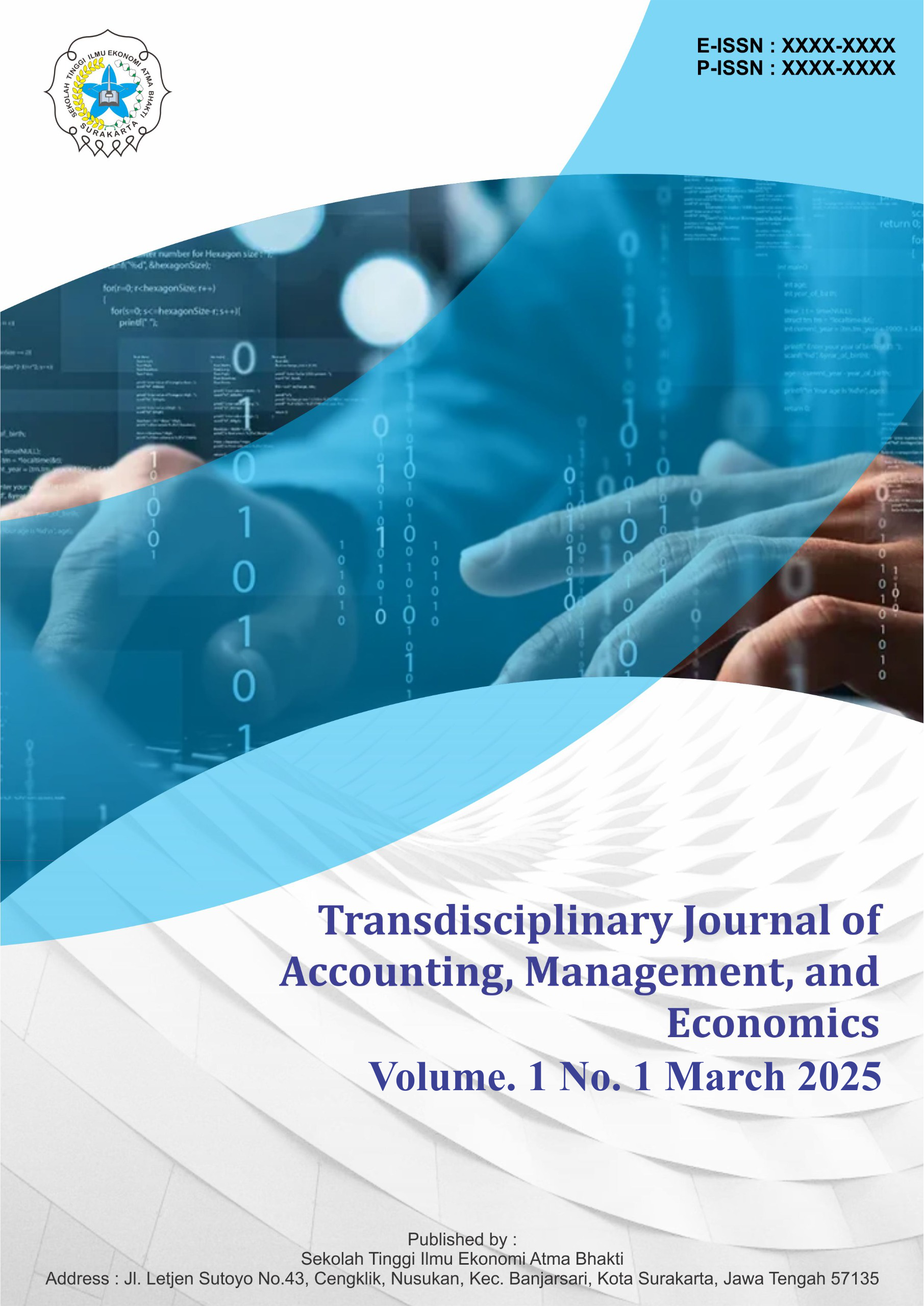The Interrelationship Between Accounting Practices, Strategic Management, and Economic Development: A Multidimensional Analysis
Keywords:
Accounting practices, Corporate governance, Economic development, Financial accountability, Organizational performance, Strategic management, SustainabilityAbstract
. This study explores the complex interrelationship between accounting practices, strategic management, and economic development through a multidimensional analysis. Accounting practices play a critical role in providing reliable financial information, enhancing transparency, and supporting decision-making processes. At the same time, strategic management offers a framework for aligning organizational resources with long-term goals, thereby fostering competitiveness, innovation, and resilience. The integration of these two dimensions contributes not only to organizational performance but also to broader economic growth and sustainability. By employing a conceptual and analytical approach, this paper examines how effective accounting systems facilitate strategic planning, risk assessment, and performance evaluation, which in turn strengthen corporate governance, efficiency, and resource allocation. Reliable accounting also provides the foundation for trust among stakeholders and investors, enabling organizations to access capital and pursue growth opportunities. Furthermore, the study highlights how strategic management drives sustainability initiatives, investment decisions, and adaptability in dynamic market environments, all of which have direct implications for economic development at both national and global levels. The analysis underscores the importance of institutional frameworks, regulatory standards, and technological advancements in shaping accounting practices and management strategies that can accelerate economic progress. Findings suggest that a synergistic relationship between accounting and strategic management creates a foundation for sustainable development by promoting financial accountability, operational effectiveness, and continuous innovation. This paper provides valuable insights for policymakers, business leaders, and academics on how integrating accounting and strategic management perspectives can serve as a catalyst for economic advancement. Ultimately, the study emphasizes that economic development is not solely dependent on macroeconomic policies but is also shaped by the micro-level practices of organizations that align financial discipline with long-term strategic vision.
References
Appelbaum, D., Kogan, A., Vasarhelyi, M. A., & Yan, Z. (2017). Impact of business analytics and enterprise systems on managerial accounting. International Journal of Accounting Information Systems, 25, 29–44. https://doi.org/10.1016/j.accinf.2017.03.003
Barney, J. (1991). Firm resources and sustained competitive advantage. Journal of Management, 17(1), 99–120. https://doi.org/10.1177/014920639101700108
Barton, D. (2015). Capitalism for the long term. Harvard Business Review, 93(3), 66–73.
Bushman, R. M., & Landsman, W. R. (2010). The pros and cons of regulating corporate reporting: A critical review of the arguments. Accounting and Business Research, 40(3), 259–273. https://doi.org/10.1080/00014788.2010.9663390
Chenhall, R. H., & Moers, F. (2015). The role of innovation in the evolution of management accounting and its integration into management control. Accounting, Organizations and Society, 47, 1–13. https://doi.org/10.1016/j.aos.2015.10.002
Creswell, J. W., & Creswell, J. D. (2018). Research design: Qualitative, quantitative, and mixed methods approaches (5th ed.). Sage.
Davis, J. H., Schoorman, F. D., & Donaldson, L. (1997). Toward a stewardship theory of management. Academy of Management Review, 22(1), 20–47. https://doi.org/10.5465/amr.1997.9707180258
Eccles, R. G., & Krzus, M. P. (2018). The Nordic model: An analysis of leading practices in ESG disclosure. Nordic Council of Ministers. https://doi.org/10.6027/TN2018-537
Fornell, C., & Larcker, D. F. (1981). Evaluating structural equation models with unobservable variables and measurement error. Journal of Marketing Research, 18(1), 39–50. https://doi.org/10.1177/002224378101800104
Grant, R. M. (2016). Contemporary strategy analysis: Text and cases edition (9th ed.). Wiley.
Hair, J. F., Hult, G. T. M., Ringle, C., & Sarstedt, M. (2019). A primer on partial least squares structural equation modeling (PLS-SEM) (2nd ed.). Sage.
Hitt, M. A., Ireland, R. D., & Hoskisson, R. E. (2020). Strategic management: Competitiveness and globalization (13th ed.). Cengage.
Jensen, M. C., & Meckling, W. H. (1976). Theory of the firm: Managerial behavior, agency costs and ownership structure. Journal of Financial Economics, 3(4), 305–360. https://doi.org/10.1016/0304-405X(76)90026-X
Sekaran, U., & Bougie, R. (2019). Research methods for business: A skill-building approach (8th ed.). Wiley.
Teece, D. J. (2018). Business models and dynamic capabilities. Long Range Planning, 51(1), 40–49. https://doi.org/10.1016/j.lrp.2017.06.007
Teece, D. J., Pisano, G., & Shuen, A. (1997). Dynamic capabilities and strategic management. Strategic Management Journal, 18(7), 509–533. https://doi.org/10.1002/(SICI)1097-0266(199708)18:7






